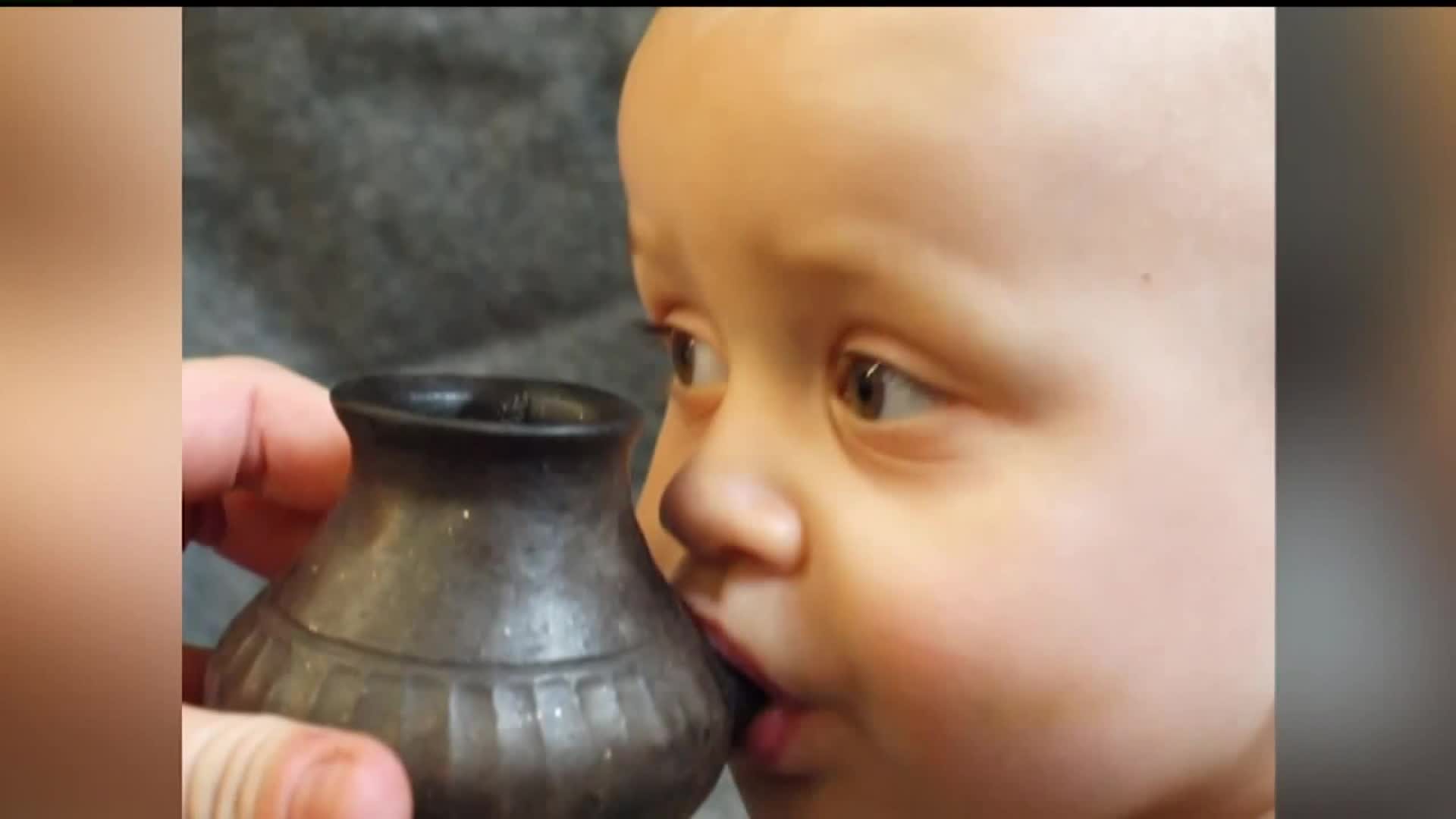(CNN) -- Researchers have uncovered three ceramic, spouted vessels believed to be prehistoric baby bottles. They were found in child graves in Bavaria, two from an Iron Age cemetery dated between 450 and 800 BC and another from a Bronze Age necropolis dated between 800 and 1200 BC, according to a new study.
In the past, small clay vessels have been found that are footed or shaped like animals. Researchers believed they could be baby bottles or used to feed those who were sick.
But for the first time, an analysis of three of these vessels revealed residue associated with animal milk, suggesting these bowls acted like baby bottles used during the weaning process. The study of the bottles published Wednesday in the journal Nature.
These bottles were between 2 and 4 inches across and featured very narrow spouts. They were found in child graves, placed next to the remains of children who were between the ages of infants and 6 years old.
The tiny openings of the spouts on previous vessels thought to be used for children made it difficult to test the residue of their contents. But these three vessels featured open bowls, which allowed for chemical and isotopic analysis.
The residue contained palmitic and stearic fatty acids associated with animal fat, as well as short-chain fatty acids that are rarely detected in old pottery, according to the study. These acids are usually associated with fresh milk fat. Isotopic analysis also revealed that breast milk was potentially mixed with dairy milk.
The researchers believe the animal milk used came from domesticated cattle, goats or sheep.
This suggests that the children were being fed animal milk instead of breast milk or being weaned off of breast milk.
"These very small, evocative, vessels give us valuable information on how and what babies were fed thousands of years ago, providing a real connection to mothers and infants in the past," said Julie Dunne, lead study author at the University of Bristol's School of Chemistry.
"Similar vessels, although rare, do appear in other prehistoric cultures (such as Rome and ancient Greece) across the world. Ideally, we'd like to carry out a larger geographic study and investigate whether they served the same purpose."
Usually, historic evidence of weaning can only be seen in the teeth of infant remains -- and even then, it's difficult to tell what they were consuming.
"This is a striking example of how robust biomolecular information, properly integrated with the archeology of these rare objects, has provided a fascinating insight into an aspect of prehistoric human life so familiar to us today," said Richard Evershed, study co-author and Fellow of the Royal Society leading the University of Bristol's Organic Geochemistry Unit.
The researchers actually recreated one of the vessels to test how they worked. They asked a professional potter to make an exact replica and tested it on Noah, just over a year old. Noah is the baby of one of the researchers, Katharina Rebay-Salisbury.
"What surprised us most was how much he absolutely loved it," Dunne said in an email.
"It seemed very intuitive for him to cup it within his hands and then lift to his mouth to drink/suckle. We put apple juice in it as that was his favorite drink. I think it is interesting that although the forms change tremendously -- the vessels are very individual -- they do seem to retain a basic bowl/cup shape that fits perfectly within a baby's cupped hands. I would also say I think this shows us the love and care these prehistoric people had for their babies. They are almost toys as well as baby bottles and surely would have make the infants laugh."
The idea that these children were consuming animal milk provides a bigger picture of prehistoric societies and how they cared for their babies.
Previous research has suggested that babies in hunter-gatherer communities breastfed for years, according to the study. But the rise of agriculture, specifically domesticating dairy animals, shortened this period by introducing the availability of animal milk and even cereal grain.
The study cited previous research that babies living from the Neolithic to the Iron Age in Central Europe were given supplementary food beginning at 6 months old and were weaned by two to 3 years old.
"This ultimately led to the so-called 'Neolithic demographic transition' where the widespread use of animal milk to feed babies, or as a supplementary weaning food, led to improved nutrition and contributed to an increased birth rate, with shorter interbirth intervals, which resulted in significant growth in human population and ultimately led to the growth of cities and the rise of urbanisation that we see today," Dunne wrote in an email.
However, if the animal milk was mishandled, the babies also could have been victim to pathogens, infection, contamination, bacteria and even malnutrition. And these vessels, which were hard to clean, might have led to disease, according to Siân Halcrow, a bioarchaeologist at the University of Otago in New Zealand.
The bottles could have actually led to poor health in some infants, Halcrow said. Future research about the rate of infant and child mortality, as well as looking for signs of nutritional or infectious disease, could fill in the gaps.
"Bringing up babies in prehistory was not an easy task," said Katharina Rebay-Salisbury, a project partner from the Institute for Oriental and European Archaeology of the Austrian Academy of Sciences.
"We are interested in researching cultural practices of mothering, which had profound implications for the survival of babies. It is fascinating to be able to see, for the first time, which foods these vessels contained."

